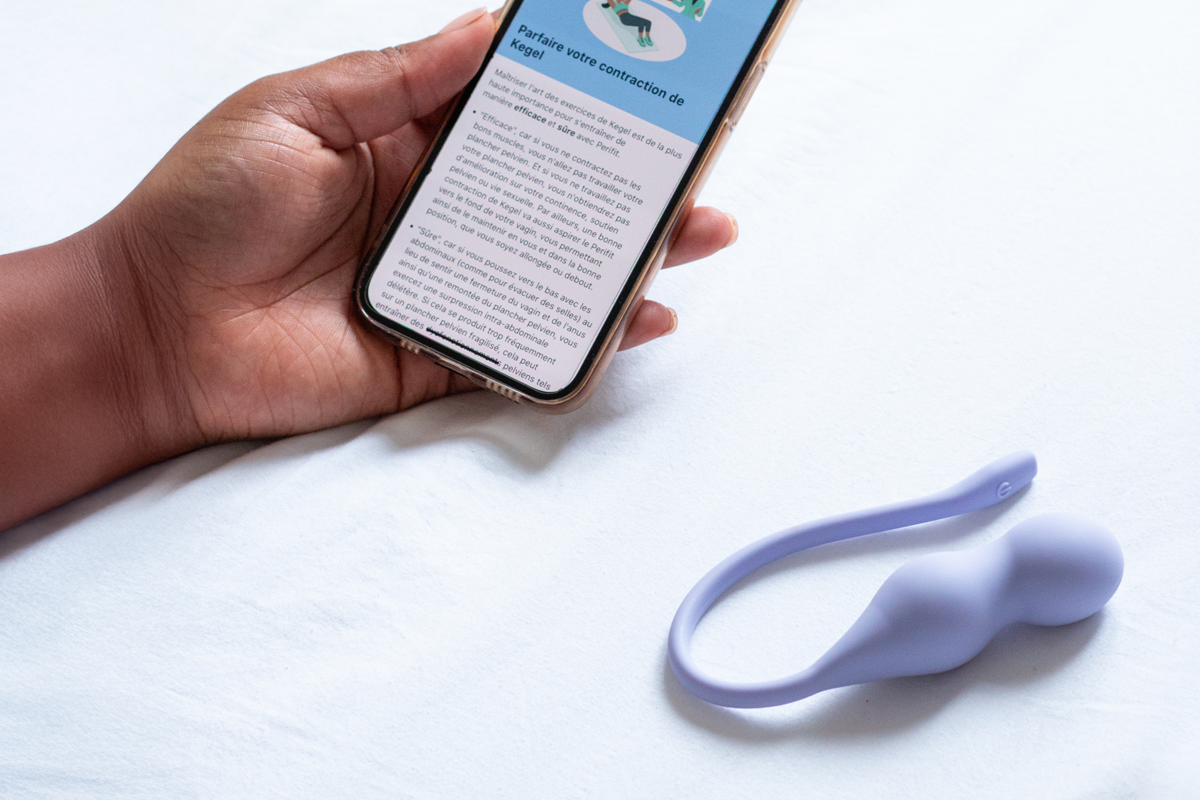Living with pelvic floor dysfunction can be a real challenge, especially when it comes to figuring out what to eat. You might feel like you're walking on eggshells with every meal, unsure if your next bite will trigger discomfort or worsen your symptoms. But don't worry – we've got your back. In this guide, we'll explore the foods that could be secretly sabotaging your pelvic floor health and offer alternatives to keep you feeling your best. By making a few simple tweaks to your diet, you can take control of your symptoms and get back to enjoying meals without fear. Ready to become a pelvic floor diet pro? Let's explore the do's and don'ts of eating for optimal pelvic health.
What is pelvic floor dysfunction and how does diet affect it?
Understanding pelvic floor dysfunction
Pelvic floor dysfunction is a condition where the muscles and connective tissues in the pelvic area don't function properly. This can lead to a range of issues, including urinary incontinence, bowel problems, and pelvic pain. Symptoms may include constipation, straining during bowel movements, urine or stool leakage, and frequent urination.
The role of diet in pelvic floor health
Your diet plays a crucial role in managing pelvic floor dysfunction. Certain foods can either exacerbate or alleviate symptoms associated with this condition. Here's how diet affects pelvic floor health:
- Fiber intake: A diet rich in fiber can help regulate bowel movements and reduce straining, which is beneficial for pelvic floor muscles. High-fiber foods (1) like fruits, vegetables, and whole grains can improve pelvic floor function.
- Hydration: Staying well-hydrated is crucial. Dehydration can lead to constipation, which may worsen pelvic floor dysfunction symptoms.
- Bladder irritants: Some foods and beverages can irritate the bladder, potentially worsening urinary symptoms. Common irritants include caffeine, alcohol, and acidic foods. For those experiencing urinary urgency or frequency, following an overactive bladder diet can be helpful.
What foods should you avoid if you have pelvic floor dysfunction?
When managing pelvic floor dysfunction, certain dietary choices can significantly impact your symptoms.
💡 Being mindful of the foods and beverages you consume is crucial for maintaining optimal pelvic health.
Let's explore some key items to avoid or limit in your diet.
Caffeine: a common culprit
Caffeine is one of the primary foods to avoid with pelvic floor dysfunction. This stimulant, found in coffee, tea, chocolate, and some sodas, can irritate the bladder and exacerbate urinary incontinence symptoms. Even decaffeinated versions of these beverages (2) can potentially irritate the bladder, so it's best to limit or avoid them altogether.
Spicy and acidic foods: potential irritants
Spicy foods and acidic items like citrus fruits and tomatoes can also trigger discomfort for those with pelvic floor issues, particularly with those who suffer with Interstitial Cystitis. These foods may irritate the bladder and worsen symptoms of urinary frequency or urgency. Avoiding spicy and acidic foods as they can make leaks and other incontinence symptoms worse.
Artificial sweeteners: hidden triggers
Many people don't realize that artificial sweeteners can also be problematic for pelvic floor health. Sweeteners like aspartame may irritate the bladder and contribute to urinary frequency. Avoiding artificial sweeteners (3) as part of dietary modifications for managing pelvic floor dysfunction.
Alcohol: a double whammy
Alcohol is another beverage to limit or avoid. Not only can it irritate the bladder, but it's also a diuretic, meaning it increases urine production. This combination can lead to more frequent bathroom trips and potentially worsen incontinence symptoms. Following a meal plan that doesn't cause unpleasant symptoms, which often includes limiting alcohol intake.
Carbonated beverages: fizzy trouble
Lastly, carbonated drinks, including sparkling water, can cause bloating and increase pressure on the pelvic floor. The carbonation in these beverages can lead (4) to discomfort and potentially exacerbate pelvic floor dysfunction symptoms.
Remember, everyone's body reacts differently to various foods and drinks. It's essential to pay attention to how your body responds and work with a healthcare provider to develop a personalized dietary plan that supports your pelvic floor health.
How can I track foods that trigger pelvic floor dysfunction symptoms?
Tracking foods that may trigger or exacerbate pelvic floor dysfunction symptoms is an essential step in managing your condition. By identifying potential dietary culprits, you can make informed choices to improve your pelvic health. Here's how to get started:
Keep a detailed food diary
Start by maintaining a comprehensive food diary. Record everything you eat and drink, including portion sizes and timing. Additionally, note any symptoms you experience throughout the day, such as urinary urgency, incontinence, or pelvic pain. This will help you identify patterns between your diet and pelvic floor dysfunction symptoms.
Certain foods and beverages can irritate the bladder and worsen pelvic floor issues.
💡 To pinpoint your personal triggers, try eliminating these potential irritants for about a week, then gradually reintroduce them one by one while monitoring changes in your symptoms.
Monitor fluid intake
Pay close attention to your fluid consumption. While staying hydrated is important, drinking too much can exacerbate bladder problems. On the flip side, insufficient fluid intake can lead to concentrated urine, which may irritate the bladder.
Consuming more fluids in the morning and afternoon, rather than at night, and limiting alcohol and caffeinated beverages.
Consider specific dietary factors
Recent research has shed light on how certain dietary components may impact pelvic floor function. Poorly absorbed carbohydrates (FODMAPs) (5) can contribute to symptoms like bloating and abdominal discomfort. Additionally, dietary fat may increase rectal sensitivity. Some individuals report improvements in symptoms when following a gluten-free diet, though this may be due to the reduction of fructans rather than gluten itself.
Use technology to your advantage
Consider using a smartphone app to track your food intake and symptoms. Many apps allow you to log meals, snacks, and beverages, as well as record any pelvic floor dysfunction symptoms you experience. This digital approach can make it easier to spot trends and share information with your healthcare provider.
Dietary recommendations for pelvic floor health
To support pelvic floor health, consider incorporating these dietary habits:
- Increase fiber intake: Aim for a diet rich in fruits, vegetables, and whole grains to promote healthy bowel movements.
- Stay hydrated: Drink plenty of water throughout the day to prevent constipation.
- Maintain a healthy weight: Obesity is a major risk factor for pelvic floor disorders. A balanced diet can help maintain a healthy weight, potentially reducing pressure on the pelvic floor. Remember the benefits of pelvic floor exercises for women are maximized when combined with a healthy diet.
- Focus on key nutrients: Incorporate foods rich in Vitamin D (fatty fish, eggs), Vitamin C (citrus fruits (as long as it is not irritating your bladder), berries, bell peppers), and Magnesium (dark leafy greens, nuts, seeds, avocados) to support muscle and connective tissue health. These vitamins are essential for pelvic floor dysfunction. Lean protein sources like chicken, fish, beans, and lentils are also important for muscle building. Don't forget Omega-3 fatty acids found in fatty fish, walnuts, and flaxseeds for their anti-inflammatory properties. These are all excellent examples of foods to eat to strengthen the pelvic floor muscles.
Now you've got the inside scoop on which foods to steer clear of for better pelvic floor health. Since every individual's body is unique, it's crucial to pay close attention to how various foods affect you personally. Don't be afraid to experiment and find what works best for your situation. By making smart choices about what you eat and drink, you're taking an important step towards managing your pelvic floor dysfunction. For optimal pelvic floor strength and function, consider the Perifit Care Kegel exerciser. Its real-time biofeedback helps improve coordination and maximize results. Keep this guide handy as you navigate your journey to improved pelvic health. With a little patience and the right approach, you'll be well on your way to feeling more comfortable and confident in your daily life.
Sources:
- https://pmc.ncbi.nlm.nih.gov/articles/PMC2877472/
- https://www.mayoclinic.org/diseases-conditions/urinary-incontinence/in-depth/bladder-control-problem/art-20046597
- https://www.ncbi.nlm.nih.gov/books/NBK559246/
- https://www.medicalnewstoday.com/articles/321847
- https://pmc.ncbi.nlm.nih.gov/articles/PMC4616214/





